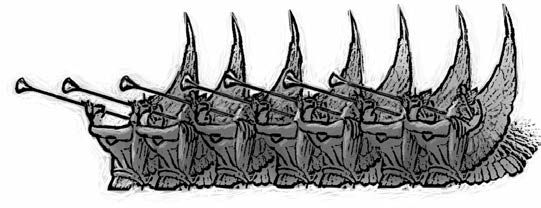Read Revelation 10:8–11. Eating in the Bible is used to describe the acceptance of a message from God in order to proclaim it to the people (see Ezek. 2:8–3:11, Jer. 15:16). When received, the message is good news; but when it is proclaimed, it sometimes results in bitterness as it is resisted and rejected by many.
John’s bittersweet experience in eating the scroll (representing the book of Daniel) is related to the unsealing of Daniel’s end-time prophecies. John here represents God’s end-time remnant church that is commissioned to proclaim the everlasting gospel (see Rev. 14:6, 7) at the close of Daniel’s time prophecy (Dan. 7:25) or 1,260 days/years.
The context indicates that John’s vision points to another bittersweet experience at the conclusion of the prophetic 2,300-year period. When, on the basis of Daniel’s prophecies, the Millerites thought that Christ would return in 1844, that message was sweet to them. However, when Christ did not appear as expected, they experienced a bitter disappointment and searched the Scriptures for a clearer understanding.
John’s commission to “prophesy again” to the world points to Sabbath-keeping Adventists, raised up to proclaim the message of the Second Coming in connection with the prophecies of Daniel and Revelation.
Read Revelation 11:1, 2. What is John ordered to do?
This passage continues the scene of Revelation 10. John was commanded to measure the temple, the altar, and the worshipers. The concept of measuring in the Bible refers figuratively to judgment (see Matt. 7:2). The temple that was to be measured is in heaven, where Jesus ministers for us. The reference to the temple, the altar, and the worshipers points to the Day of Atonement (see Lev. 16:16–19). This day was a day of “measuring,” as God judged His people. Thus, Revelation 11:1 refers to the judgment that takes place prior to the Second Coming. This judgment concerns exclusively God’s people—the worshipers in the temple.
Revelation 11:1 shows that the heavenly-sanctuary message lies at the heart of the final gospel proclamation, which includes the vindication of God’s character. As such, it gives the full dimension of the gospel message regarding the atoning work of Christ and His righteousness as the only means of salvation for human beings.
Keeping in mind how central blood was to the Day of Atonement ritual (see Leviticus 16), how can we always keep before us the reality that the judgment is good news? Why is this truth so important?
Additional Reading: Notes from Ellen G. White
We are to give the last warning of God to men, and what should be our earnestness in studying the Bible and our zeal in spreading the light! Let every soul who has received the divine illumination seek to impart it. Let the workers go from house to house, opening the Bible to the people, circulating the publications, telling others of the light that has blessed their own souls. . . .
A great work is to be done, and those who know the truth should make mighty intercession for help. The love of Christ must fill their own hearts. The Spirit of Christ must be poured out upon them, and they must be making ready to stand in the judgment. As they consecrate themselves to God, a convincing power will attend their efforts to present the truth to others. . . . The last warning is to be proclaimed before “many peoples, and nations, and tongues, and kings,” and the promise is given, “Lo, I am with you alway, even unto the end of the world.” Revelation 10:11; Matthew 28:20.—Testimonies for the Church, vol. 9, pp. 122, 123.
All . . . will be tested. If they will make Christ their pattern, He will give them wisdom and knowledge and understanding; they will grow in grace and aptitude in Christ’s way; their characters will be molded after His similitude. If they fail of keeping the way of the Lord, another spirit will control the mind and judgment, and they will plan without the Lord and will take their own course. . . . The time has come when everything is to be shaken that can be shaken, that those things which cannot be shaken may remain. Every case is coming in review before God; He is measuring the temple and the worshipers therein.—Testimonies for the Church, vol. 7, p. 219.
The church is firmly and decidedly to hold her principles before the whole heavenly universe and the kingdoms of the world; steadfast fidelity in maintaining the honor and sacredness of the law of God will attract the notice and admiration of even the world, and many will, by the good works which they shall behold, be led to glorify our Father in heaven. . . .
The Lord has provided His church with capabilities and blessings, that they may present to the world an image of His own sufficiency, and that His church may be complete in Him, a continual representation of another, even the eternal world, of laws that are higher than earthly laws. His church is to be a temple built after the divine similitude, and the angelic architect has brought his golden measuring rod from heaven, that every stone may be hewed and squared by the divine measurement and polished to shine as an emblem of heaven, radiating in all directions the bright, clear beams of the Sun of Righteousness. . . . Clad in complete armor of light and righteousness, she enters upon her final conflict. The dross, the worthless material, will be consumed, and the influence of the truth testifies to the world of its sanctifying, ennobling character.—Testimonies to Ministers and Gospel Workers, pp. 16, 17.

